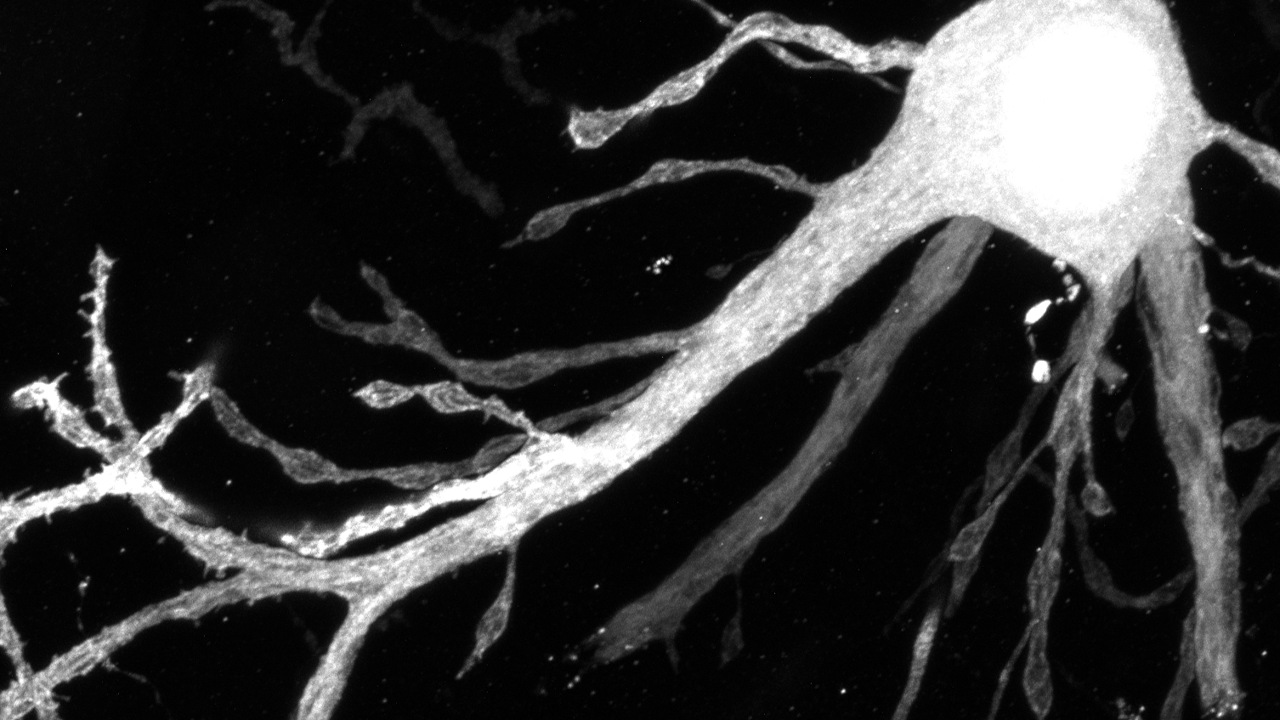Research
In the auditory brainstem, specialized cells extract information about the acoustic world and continuously analyze cues such as frequency, phase, and amplitude. Timing plays a central role in hearing, since natural sounds like speech contain multiple frequencies that occur either simultaneously or in a specific sequence. Neurons in the auditory system are specialized to handle the energetic and computational burden of high-fidelity temporal processing. The octopus cell of the mammalian cochlear nucleus stands out for its unique sensitivity to both the temporal and frequency components of sound stimuli. 
Assembly of Auditory Brainstem Circuitry

Synapses from the auditory periphery are spatially organized on the cell body and dendrites of an octopus cell in a map of sound frequency such that correlated frequencies within a sound can be mapped along a single neuron. We use anatomical and genetic methods to map the spatial distribution of a neuron's synaptic inputs.

As auditory nerve synapses on octopus cells are refining and pruning, there are parallel changes in the size, shape, and complexity of the octopus cell dendritic arbor.
Sparse labeling of octopus cells allows us to visualize anatomical changes over the course of development and understand how changes in auditory experience impact morphology and dendritic computations.
Physiological Development

During synaptogenisis, when the inputs that connect the cochlea to the brainstem are changing and refining, the electrical properties of octopus cells rapidly mature and they quickly become one of the fastest and most precise neurons in the brain.
OCs have incredible biophysical specializations that make them sensitive to the coincident arrival of rapid ANF inputs and allow them to fire action potentials with temporal precision. We make whole-cell patch-clamp recordings in slices to measure the biophysical properties of octopus cells that contribute to temporal coding.

